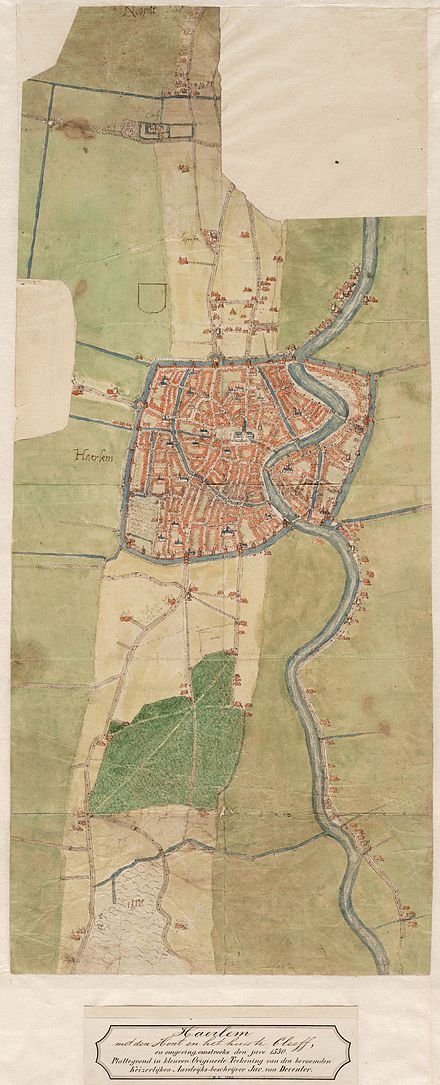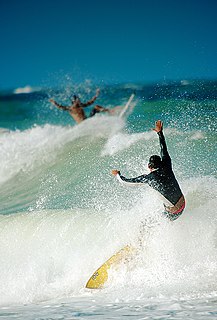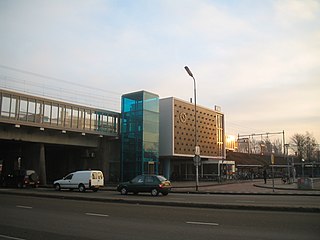
Frans Hals the Elder was a Dutch Golden Age painter, normally of portraits, who lived and worked in Haarlem. He is notable for his loose painterly brushwork, and he helped introduce this lively style of painting into Dutch art. Hals played an important role in the evolution of 17th-century group portraiture.

Steenwijk is a city in the Dutch province of Overijssel. It is located in the municipality of Steenwijkerland. It is the largest town of the municipality.

The Grote Kerk or St.-Bavokerk is a Reformed Protestant church and former Catholic cathedral located on the central market square in the Dutch city of Haarlem. Another Haarlem church called the Cathedral of Saint Bavo now serves as the main cathedral for the Roman Catholic Diocese of Haarlem-Amsterdam.

The Frans Hals Museum is a museum located in Haarlem, the Netherlands.

The Spaarne is a river in North Holland, Netherlands. This partially canalized river connects the Ringvaart to a side branch of the North Sea Canal. It runs through Haarlem, Heemstede, and Spaarndam.

Isaac Jan Alexander Gogel was the first minister of finance of the Batavian Republic and the Kingdom of Holland. He married Catharina van Hasselt in 1800, and had three children.
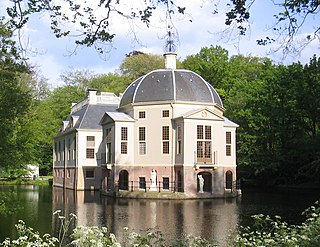
A buitenplaats was a summer residence for rich townspeople in the Netherlands. During the Dutch Golden Age of the 17th century, many traders and city administrators in Dutch towns became very wealthy. Many of them bought country estates, at first mainly to collect rents, however soon mansions started to be built there, which were used only during the summer.

Henry Hope (1735–1811) was an Amsterdam merchant banker born in Boston, in Britain's Massachusetts Bay Colony in North America.
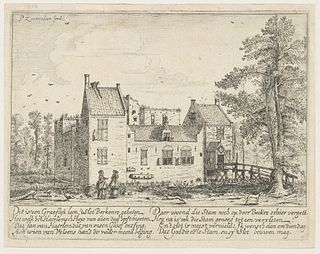
Berkenrode, or Berckenroode is a former 'Heerlijkheid' in the Dutch province of North Holland, situated on the southwest side of Haarlem on the leidsevaart, north of Iepenrode and west of Heemstede. The original castle Berkenrode in the center of the moat was burned by the Spanish during the siege of Haarlem in 1572. The castle was rebuilt and despite suffering another fire in 1747 the settlement continued to function as a separate municipality with its own chapel up to 1857, when the town was annexed by Heemstede. The town archives are now kept at the North Holland Archives in Haarlem.
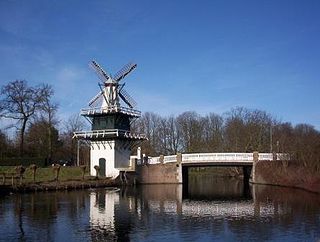
Groenendaal park lies at the center of Heemstede, Netherlands. The park includes the grounds of old Heemstede country estates Bosbeek, and Meer en Berg. Along its western borders are the old Heemstede country estates Hartekamp, Huis te Manpad, and Iepenrode. On the eastern boundary is the city cemetery.

De Naald is a monument in Heemstede, Netherlands, erected in 1817 by the city council to commemorate two battles on the Manpad road running next to the site. The site is at the corner of the Manpad, and Herenweg, on property belonging to the estate 'Huis te Manpad'.
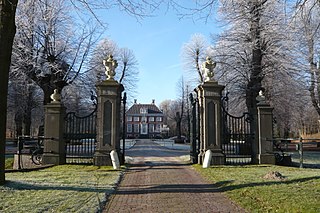
The Huis te Manpad is an historical villa and former summer home of Jacob van Lennep in Heemstede, the Netherlands; bordered by the Leidsevaart canal, the Manpadslaan, and the Herenweg. It neighbors the estate of Hartekamp, famed for the gardens described by Linnaeus. Both estates still have trees and other flora dating from that period.

Museum Haarlem is a city museum on Groot Heiligland 47, Haarlem, Netherlands, located across the street from the Frans Hals Museum. It shares its front door with the ABC Architectuurcentrum Haarlem, which is located next door. The museum is devoted to presenting and preserving the cultural history of Haarlem and the surrounding region.

Maria Hoofman (1776–1845), was a 19th-century art collector from the Northern Netherlands.
The following is a timeline of the history of the municipality of Haarlem, Netherlands.

Haerlempjes refer to a specific genre of landscape painting that includes a view of Haarlem. It is used most often to refer to Jacob van Ruisdael's panoramic views of the city, but the term is derived from mentions in Haarlem archives as a type of painting included in household inventories. The diminutive suffix "pje" would denote a small, cabinet-sized painting, but even the largest landscapes may be referred to as Haerlempjes today.




